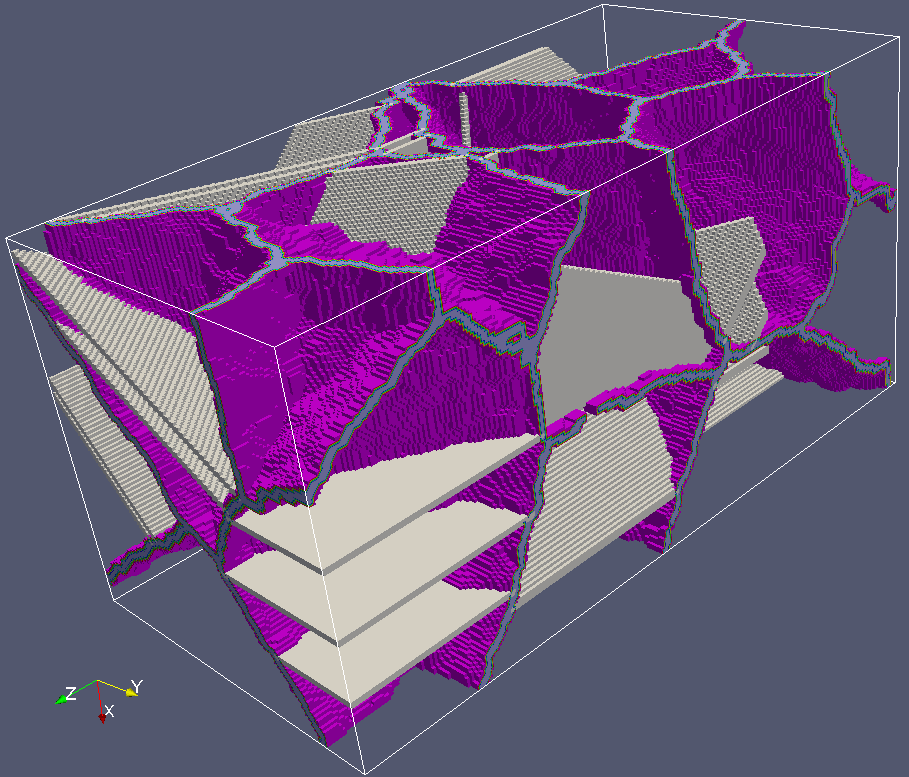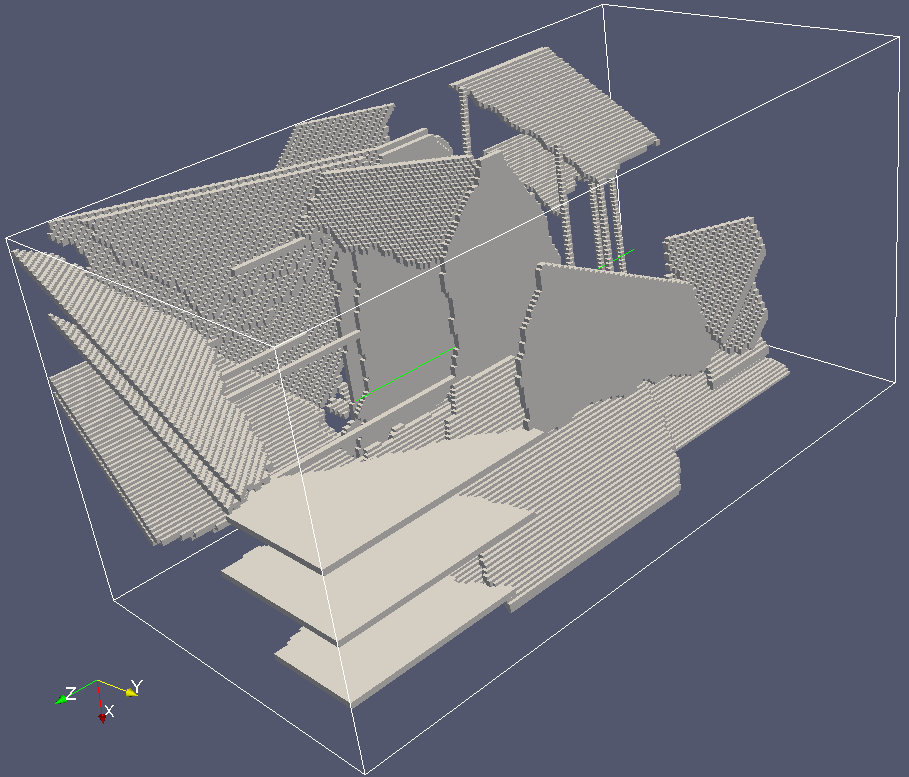


CGPACK > JUL-2014
11-JUL-2014: Improved algorithm for preventing crack proliferation on grain boundaries.
Previously, GB fracture event was recorded by an image when it happened, but not communicated to other images until the end of iteration. Now, GB fracture is communicated as soon as possible. It is remotely put into all images' cgupd arrays. All images read their gcupd arrays when each cell is processed, i.e. many times per iteration. Looking at the debug output, I see that GB fracture indeed is picked up by all images very soon after it happens on any image. However,... the end result doesn't look that much different. One obvious conclusion is that these multiple parallel cracks in each crystal are not due to proliferation at the boundary, but rather due to cracks from other grains entering the same grain from another GB.
Below is a case with 20 grains, coarray allocated as (64,64,64)[2,2,4], i.e. on 16 images. The model runs under 10 min on BlueCrystal phase 3.




14-JUL-2014: Some animations (click on images)
A 100 grain example, coarray(128,128,128)[2,2,4], >33M cells, 300 cleavage propagation iterations.
Grains:
Grain boundaries:
Cleavage crack, propagating along -Z. There was a single crack nuclei in the model at the centre of the face normal to Z, with max Z coordinate. Note that after 300 cleavage iterations the crack propagated roughly about a half of the model. Crack speed, at present, is one cell per iteration, so the crack length should be about 300 cells along Z. The length of the model is 512 cells, so this makes sense.
15-JUL-2014: Animations of crack growth vs time (click on images)
A 20 grain example, coarray( 64,64,64 )[2,2,4], >4M cells, 300 cleavage propagation iterations.
Growing crack with a stationary model:
The same growing crack with a rotating model, hopefully to add 3D clarity:
16-JUL-2014: Animations of crack growth vs time, a bigger example, 100 grains (click on images)
A 100 grain example, coarray( 100, 100, 100 )[2,2,4], 16M cells, 300 cleavage propagation iterations.
Grains:
Grain boundaries:
Cracks are purple, grain boundaries are gray. The 3D crack artefacts are gray because they occupy whole grains (potentially), hence what you see is just a gray GB. There are 10 crack propagation frames in each animation, separated by 30 cleavage iterations. (10*30=300 total cleavage iterations).
Growing crack with a stationary model:
Different view of the same crack:
Same crack, rotated model:
24-JUL-2014: Another animation of crack growth, pay attention to the direction of the max. principal stress
A 100 grain example, coarray( 64, 64, 64 )[4,4,3], 12M cells, 300 cleavage propagation iterations. The max. principal stress direction is {1, -1, 0}. Accordingly note that the emerging crack structure is normal to this direction.